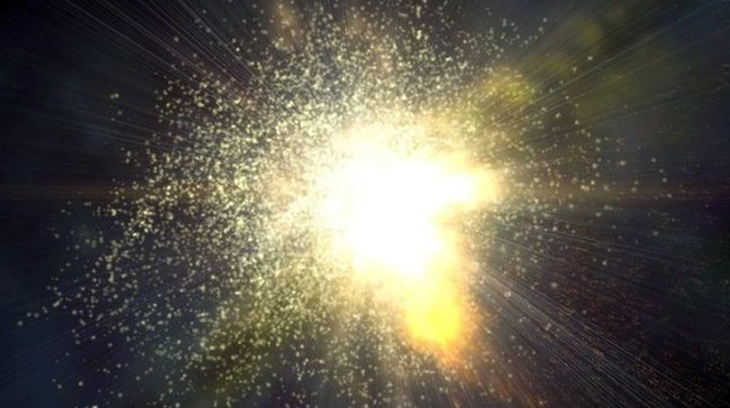
Illustration of the Big Bang - Source: NASA
Astronomers from the University of Hawaii's Institute for Astronomy (IfA) have discovered the most energetic type of cosmic explosion ever detected, dubbed "extreme nuclear transients" (ENT).
This extraordinary phenomenon occurs when massive stars - at least three times the mass of our Sun - are torn apart after coming too close to a supermassive black hole, releasing huge amounts of energy that can be seen from enormous distances. Scientists call it "the biggest series of explosions since the Big Bang".
These ENTs are markedly different from any other tidal disruption events (when a star is ripped apart by a black hole) that have been observed, reaching nearly 10 times the brightness and remaining so for years, far exceeding the total energy output of even the brightest supernovae, according to research published in the journal Science Advances.
The most energetic ENT studied, called Gaia18cdj, released 25 times more energy than the most powerful supernova ever known. While a typical supernova releases the equivalent of the Sun's entire 10-billion-year lifetime in just one year, ENTs release the energy of 100 Suns in the same time period.
The team, led by Jason Hinkle, discovered the ENTs while systematically searching publicly available data, notably from the European Space Agency's Gaia mission, for long-lasting bursts of light that emanate from the centers of galaxies. These events show a gradual increase in brightness over long periods of time, unlike any known transient astronomical phenomenon.
Data from several telescopes, including the University of Hawaii's Asteroid Earth Impact Last Alert System (ATLAS) and the W.M. Keck Observatory, have confirmed their unique nature.
The enormous energies and smooth, elongated light curves of the ENTs suggest that they are not supernovae. Instead, the mechanism identified is the slow accretion of matter from a collapsed star onto a supermassive black hole.
The discovery provides a valuable new tool for studying supermassive black holes in distant galaxies. Because of their extreme brightness, scientists can observe ENTs from vast cosmic distances, which means looking back in time. This opens up the opportunity to learn about the growth of black holes when the universe was about half its current age, when galaxies were much more active than they are today.
Although 10 million times rarer than supernovae, future observatories such as NASA's Vera C. Rubin Observatory and Roman Space Telescope are expected to detect many more ENTs, contributing to our understanding of black hole behavior in the early universe.
Source: https://tuoitre.vn/phat-hien-vu-no-lon-nhat-vu-tru-ke-tu-big-bang-20250605082003289.htm




































































































Comment (0)